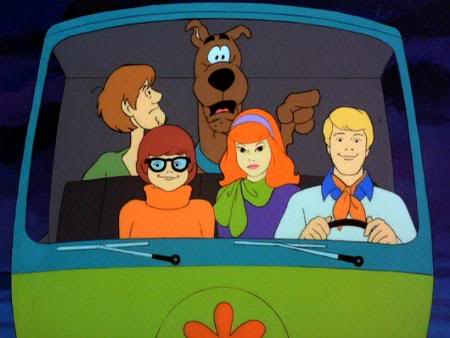How long is gas still “good” in a tank? Premium gas, pretty sure it’s 10% ethanol.
Gas should be okay to sit for a while but will gradually lose its octane rating. FI bikes are especially tolerant. Carbed bikes can have issues as the gas evaporates out of the float bowls (jets can clog). Might be worth draining them or running them out before you leave it.
Don’t park your bike under trees in a rainy region or the drain hole can clog, water could get in your tank which is a really bad time.
Sitting for 3 months, FI bike (MT-09). Siphon out of the tank or run it?
3 months is no problem at all
My Vstrom sat for about 5 months with the same tank of gas. Started and ran just fine when spring arrived.
I don’t think the MT-09 needed premium either. Should be fine.
@JustAManOnAToilet @Fox
Put some Sea Foam (a brand, pretty easy to find) in the tank and let it sit for a while. Should clear up any problems with older gas. I’ve used for years for bikes and engines that have to sit for long periodsBE CAREFUL with Sea Foam. See https://youtu.be/chsGBhB5g7o
I wouldn’t use Seafoam as a gasoline treatment after the Project Farm video I saw on it. There are other stabilizers I’d choose before it. If it’s just a couple months then wouldn’t add anything.
Lower octane means burns FASTER…doesn’t aging make the fuel LESS ENERGETIC (burns less well overall)? That’s why hi-comp engines use hi-octane fuel, it takes just a bit more to get it to burn.
Water in the fuel? Dump a load of rubbing alcohol. (Isopropyl–the usual ingredient of rubbing alcohol–will not harm your fuel system’s plasticky bits.) My understanding is we could add quite a lot of isopropyl without harming the engine, but I’m not an SAE engineer.
I don’t think it’s true that lower octane burns faster or that aging results in less energy, though results from a search are conflicting. The important factor of octane is knock resistance, tendency against igniting before the spark in a high pressure environment - for example wide open throttle on a hot day in a high compression ratio engine. Degradation from sitting isn’t that serious in the short term for OP’s purposes.
Iso or better yet methanol is good to absorb and burn off water in the tank but you don’t want water in there in the first place. It will leave deposits in the fuel system that clog things up, and can start the tank rusting. Better to avoid in the first place by riding the bike regularly to keep the gas fresh and checking the tank ring drain of a bike sitting outside once in a while to make sure it’s clear of grime. Passive water absorption is a thing too but less of a concern over a timeframe of months.
The biggest factor will probably be what temperatures the bike will go through as it’s parked and how humid the environment is.
The problem there is the expansion and contraction of the fuel vapour in the tank with temperature cycles. When its hot enough, the fuel vapour will be released through the breather.
If it’s parked up for really long (years), the fuel will turn into a gummy substance.
The bigger issue, particularly with Ethanol in fuel is that during cooling cycles, air from the atmosphere gets into the tank. That air contains Oxygen which does some degradation, but more importantly it also bring in humidity.
Ethanol is hydrophilic, and will absorb moisture from the air. That can later separate again and sit at the bottom of the tank, causing rust.
What does all that mean?
If if the bike is parked in cold location with steady temperatures and dry air, you can probably park it for years without any issues.
If it’s a black bike that you park in the sun in a location with high humidity (Darwin Australia or Florida), then then fuel will probably degrade in a couple months.
I’ve let high octane sit in dry environments for six to nine months multiple times w/o issue. YMMV
As I understand it, the issue with the ethanol is attracting moisture. If I was going to leave a bike for a year, without someone around to ride it, I’d drain the fuel, run it dry, and put the it on a stand.
I fill the tank and put fuel stabilizer (like Sta-Bil) in and run the bike for a few minutes before I put the bike away for the winter. Also a trickle charger. Always cranks first try in the spring, so that’s 3-4 months in an unheated garage.
If your bike is fuel-injected, just turning it on (such that the fuel pump runs) the fuel will be circulated for you. The pump runs at 100% power all the time, the extra fuel is returned to the tank. Just a very brief run after a minute or two’s agitation by the pump, should be enough to put StaBil-ized fuel in every vital part.
Yeah mine is carb. I do the same sort of thing with my mowers, just run them a few minutes with the stabilized fuel.
Fuel stabilizers don’t actually do much, at least for humidity
Looks a good bit better than nothing, plus having the fuel tank full helps there to be less room for moisture to form.
Afaik there isn’t a definitive timeline for gasoline expiration, it simply degrades over time so the longer it sits the more likely it is to damage your engine. If you’re worried about it sitting for a while you can add some stabilizer.
Personally, I have let high octane gas sit in a car for almost a year and it still ran, no obvious issues, but I wouldn’t recommend it.
Couple months. The ethonal slowly absorbs water from the air and has the potential to gum up fuel injectors. Nodern bikes are more resistant to this, and you can always dilute it with fresh gas



